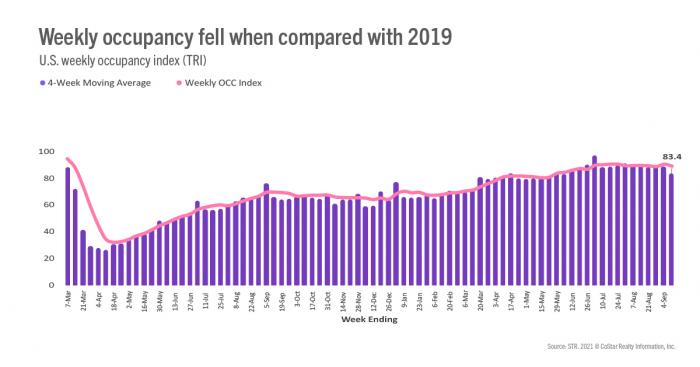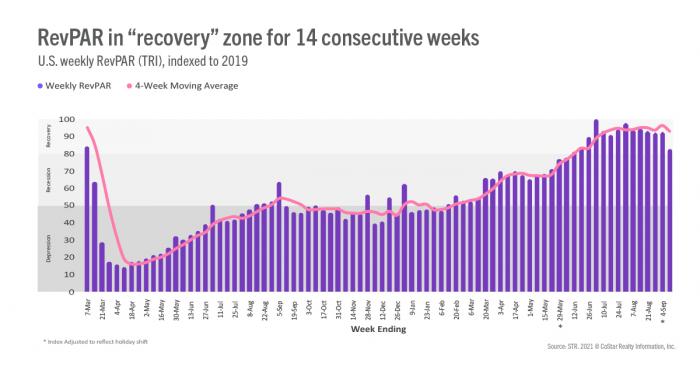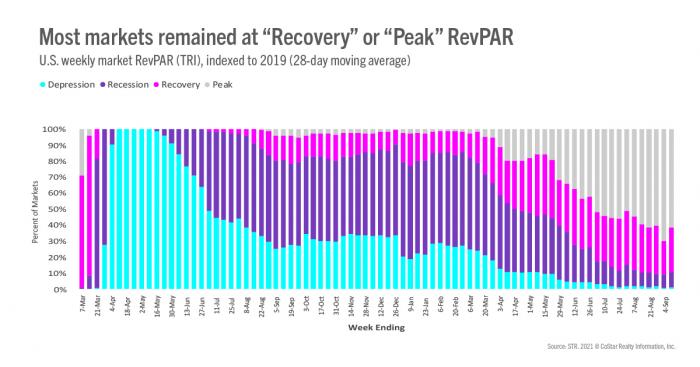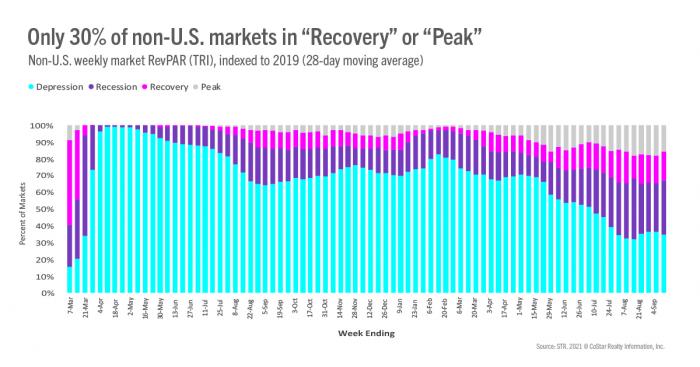Previous MRM versions: 28 August | 4 September
Week ending 11 September
Occupancy for the week ending 11 September 2021 was 60.0%, somewhat better than expected and boosted upward by Labor Day Sunday. Weekday demand was again augmented by the ongoing recovery efforts in Louisiana and surrounding markets due to the lingering impact from Hurricane Ida, but to a lesser extent than in the previous week. As expected, demand slid downward earlier in the week due to the end of the holiday, Rosh Hashanah and limited business travel. The weekend, however, remained strong with occupancy at 70.6%, as more than half of all markets saw stronger demand this past weekend when compared with the corresponding weekend in 2019. On a total-room-inventory basis (TRI), which accounts for temporarily closed hotels, weekly occupancy was 57.6%.




